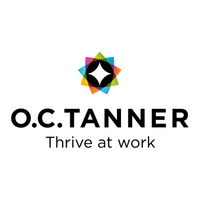Nice job: Five sure-fire ways to create a culture of recognition

This breeds a strong culture of success. Here we look at some of the ways you can use recognition to create a culture of appreciation.
1. Recognise efforts, achievements and milestones
Recognising employee accomplishments is vital for building strong relationships at work, and extensive research shows there is a link between recognition and connections that leads to a thriving workplace culture.
Connections at work do more than support employee happiness in the workplace. They help employees perform better and recognition deepens the connections employees crave. The giver acknowledges the value of a co-worker and demonstrates their appreciation. The recipient feels seen; they believe they matter and are valued. And, as recognition is shared across the organisation, the connections amplify.
It’s been proven that the most effective types of recognition combine appreciation of efforts, especially when employees go ‘above and beyond’ and even if the results don’t follow; recognition of accomplishments; and a celebration of career anniversaries and other important milestones.
2. Make recognition personal – tailor it to individuals' needs to ensure it's genuine and sincere
With many organisations offering workers a work from home option, it becomes challenging to ensure a recognition programme is accessible to all staff, whether they’re working remotely, in the office or out on the road.
If the goal is to build connection, recognition cannot be generic; it must be sincere and tailored to the individual. In a hybrid work model, organisations may struggle with how to evolve their recognition programmes, particularly since employees won’t be physically together as often.
However, meaningful recognition doesn’t have to be complicated. Rethink how recognition fits into your new employee experience. What systems or processes might you have to change or enhance? One fact is increasingly clear: integrated, personalised recognition is a potent means to help employees feel connected and do more great work.
3. Recognise frequently – ideally daily, and make it timely
Recognition builds trust, camaraderie and the perception that an employee’s contribution counts. Nearly 90% of employees have high trust in a leader who recognises their accomplishments, compared with 48% who feel the same level of trust without recognition.
To ensure great work gets appreciated as it happens, recognition should be a constant, integrated element of an organisation’s culture. To be truly integrated, recognition must be personalised, part of the daily employee experience and celebrate a variety of achievements.
If recognition is an integrated part of the natural flow of work, it’s far more likely to be given in a timely manner when it has the greatest impact. And, when leaders and peers frequently show appreciation for employee contributions, there are myriad opportunities for employees to feel connected to each other, the organisation’s purpose and to success.
4. Encourage peer-to-peer recognition
The employee experience is a combination of everyday micro-experiences and stand-out macro-experiences, both of which play key roles in shaping an individual’s connection to their work, colleagues, and organisation.
Peak moments, like a recognition experience, involve deep, affirmative emotions that elevate an employee’s connection to purpose, accomplishment and one another. They also make a dramatic difference in the overall employee experience when they occur regularly.
OC Tanner’s research confirms that employees are drawn to work that promises a degree of ownership, a sense of belonging and a chance to exercise their skills in a way that makes a meaningful contribution to the success of their teams and organisation.
By promoting peer-to-peer recognition as well as a typical top-down approach, workers are encouraged and empowered to identify great work in their colleagues, which in turn leads to other benefits such as increases in engagement and productivity, as well as a dramatic increase in retention.
5. Use technology to integrate recognition into workplace culture
With technology playing such a significant role in a successful recognition programme, the right programme can also provide useful data to evaluate success and integrate into other HR or performance management tools.
With the right recognition partner, and armed with this crucial information, HR leaders can delve into how different personalities and personas can be better served with a personalised recognition strategy, ultimately driving a culture of appreciation that can satisfy the entire workforce.
Research demonstrates a link between recognition and connection, and with the right programme, technology and leadership, organisations can create a thriving workplace culture with recognition and appreciation at its core.
For more information about the latest trends and insights on workplace culture, download the 2022 Global Culture Report.
The author is Cynthia Mühlemann De-Bruce, culture and engagement strategist at OC Tanner
The article is supplied by OC Tanner
Supplied by REBA Associate Member, O. C. Tanner
Giving teams the integrated tools they need when, where and how they need them.







